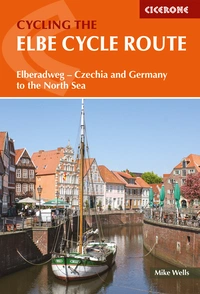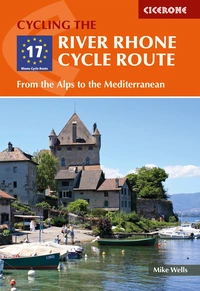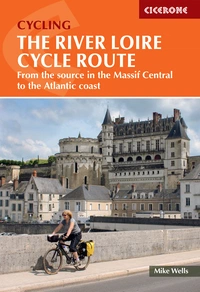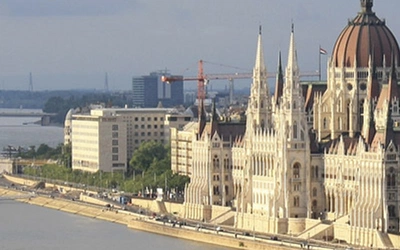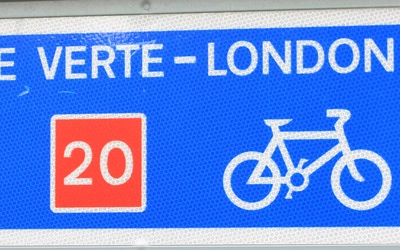Cycling the Danube: Budapest to the Black Sea
The 2772km-long Danube is Europe’s second longest river (behind the Volga). Rising in the German Black Forest, it runs through 10 countries on its way to the Black Sea. In this post we cover all the key facts you need to know about the more adventurous second part of the Danube, which makes for a superb journey through central and eastern Europe from Budapest to the Black Sea.

| What? | The Danube Cycleway |
| Where? | Between Budapest and the Black Sea |
| Is that the entire cycleway? | Only the second part – the first part runs from its source in the Black Sea to Budapest. |
| How long? | 1712km |
| How many stages? | This guide breaks the route into 32 stages, averaging 53.5km per stage (although there is a wide variation in stage lengths from 30km to 96km). |
| How many countries does this part include? | Four (The river route starts in Hungary and continues into Croatia and Serbia before ending at Tulcea in Romania.) |
| Is the route well signposted? | The route follows part of EuroVelo route 6 (EV6), a trans-continental cycle route running from the Atlantic coast of France to the Black Sea. This is well waymarked in Hungary and Serbia, partly so in Croatia but unmarked in Romania. |
| How long to complete? | In theory a fit cyclist covering 90km per day should be able to complete the trip in 19 days. However, this is difficult to achieve because of unequal distances between overnight accommodation, and so, unless you are camping, it is advisable to plan on taking between three and four weeks. |
| Is the route level? | As the Danube has dropped to an altitude of only 100m above sea level by the time it reaches Budapest, the cycleway following the river is mostly level. |
| When to go? | The route is generally cycleable from April to October. The best times are probably late spring (May–June) and early autumn (September–October) as it can be very hot during July and August when 40ºC is not uncommon on the Hungarian plain and in southern Romania. |
| How to travel there and back? | If you reached Budapest by cycling the Danube Cycleway from Vienna or the river’s source in the German Black Forest, you will have reached Szechenyi chain bridge in central Budapest, the start point for Stage 1 of this guide. If you are starting from Budapest, you can reach the city by rail, air, road or river. Since covid restrictions made getting your bike from the UK to Budapest by train very difficult so the current best recommendation is to go by plane. |
| What accommodation is available? | For most of this route places to sleep are more limited with sometimes long distances between them. This becomes more acute the further east you progress. Until recently it was impossible to complete this route without using a tent to provide accommodation in remote areas. However, the number of places offering accommodation has increased as new premises have opened and it is now possible by using google search |
| What kind of bike do I need? | The most suitable type of cycle is either a touring cycle or a hybrid (a lightweight but strong cross between a touring cycle and a mountain bike with at least 21 gears). There is no advantage in using a mountain bike. |
| What maps do I need? | By far the best mapping is provided by the definitive maps of EV6 published by Huber Kartographie. |
| Route highlights? | This route has spectacular gorges, medieval fortresses, memorials to the recent Yugoslav civil war, vineyard clad hillsides, and rural areas where crops are still planted and harvested by hand and the main means of transport is horse and cart. Other highlights include: Budapest: Fishermen's bastion, St Mathias church, Europe's largest synagogue, Liberty monument; Kopački Rit nature reserve; Osijek: Tvrđa fortress; Vukovar: civil war memorials; Novi Sad: Petrovaradin fortress; Belgrade: Kalemegdan fortress, St Sava cathedral; Golubac castle; Iron Gates gorges: Golubacki klisura, Gospodin vir, Veliki Kazan, Mali Kazan; rural Romania; Dervent monastery; Tulcea; Danube Delta. |
| Stage | Start | Finish | Distance |
|---|---|---|---|
| 1 | Budapest, chain bridge | Ráckeve, Árpád bridge | 47km |
| 2 | Ráckeve, Árpád bridge | Solt, Béke tér square | 50.5km |
| 3 | Solt, Béke tér square | Foktő | 40.5km |
| 4 | Foktő | Baja, Szentháromság square | 44.5km |
| 5 | Baja, Szentháromság square | Mohács, ferry ramp | 34km |
| 6 | Mohács, ferry ramp | Osijek, Pješački bridge | 81km; alternative route 84.5km |
| 7 | Osijek, Pješački bridge | Vukovar, Vuka bridge | 44.5km |
| 8 | Vukovar, Vuka bridge | Bačka Palanka, St John the Baptist church | 40.5km |
| 9 | Bačka Palanka, St John the Baptist church | Novi Sad, Varadinski bridge | 43.5km |
| 10 | Novi Sad, Varadinski bridge | Novi Slankamen, crossroads | 41km |
| 11 | Novi Slankamen, crossroads | Belgrade, St Alexander Nevsky church | 53km |
| 12 | Belgrade, St Alexander Nevsky church | Kovin, marina | 67km; alternative route 56.5km |
| 13 | Kovin, marina | Stara Palanka, ferry ramp | 39.5km; alternative route 40km |
| 14 | Stara Palanka, ferry ramp | Golubac, main square | 38km |
| 15 | Golubac, main square | Donji Milanovac, tourist office | 57km |
| 16 | Donji Milanovac, tourist office | Drobeta-Turnu Severin, Tudor park | 67km |
| 17 | Drobeta-Turnu Severin, Tudor park | Gruia, church | 71.5km |
| 18 | Gruia, church | Calafat, town hall | 62.5km |
| 19 | Calafat, town hall | Bechet, Dn55 junction | 96km |
| 20 | Bechet, Dn55 junction | Corabia, post office | 45.5km |
| 21 | Corabia, post office | Turnu Măgurele, central park | 30.5km |
| 22 | Turnu Măgurele, central park | Zimnicea, town hall | 57km |
| 23 | Zimnicea, town hall | Giurgiu, Turkish watchtower | 60km |
| 24 | Giurgiu, Turkish watchtower | Olteniţa, central park | 76km |
| 25 | Olteniţa, central park | Călăraşi, Volna church | 70km |
| 26 | Călăraşi, Volna church | Ion Corvin, Dj223 junction | 65km |
| 27 | Ion Corvin, Dj223 junction | Cernavodă, roundabout | 40.5km |
| 28 | Cernavodă, roundabout | Hârşova, Dn22a junction | 53km |
| 29 | Hârşova, Dn22a junction | Măcin, Dn22 junction | 88km |
| 30 | Măcin, Dn22 junction | Galaţi, ferry ramp | 30.5km |
| 31 | Galaţi, ferry ramp | Isaccea, mosque | 42km |
| 32 | Isaccea, mosque | Tulcea, Oraş station | 36km |
| Total km | - | - | 1712km |
The Danube Cycleway Volume 2
From Budapest to the Black Sea
£17.95
Cycling guidebook to the Danube Cycleway exploring the route from Budapest to the Black Sea, the more adventurous second part of the Danube, suitable for most abilities and bike types. The river route starts in Hungary and continues into Croatia and Serbia before ending at Tulcea in Romania. The Danube Cycleway is also part of EuroVelo 6 (EV6).
More information

